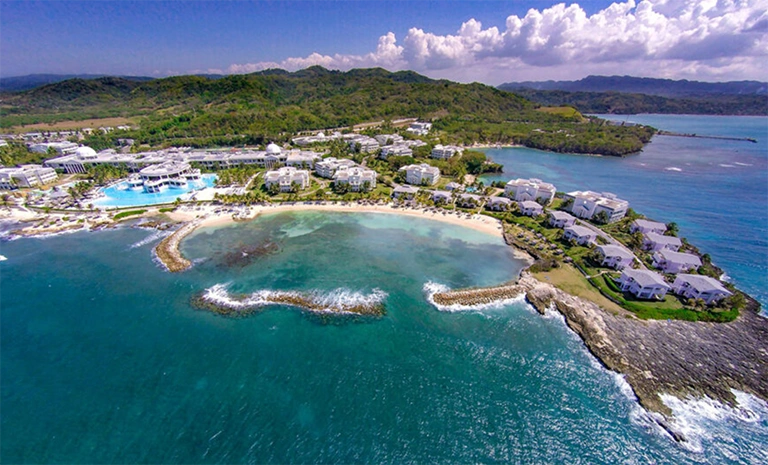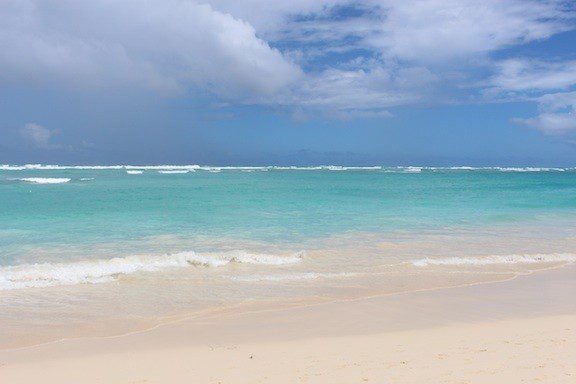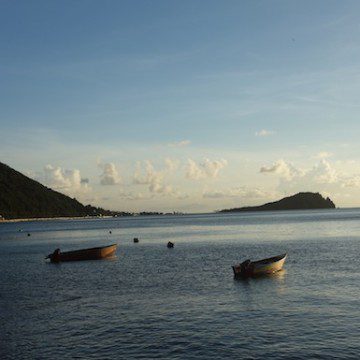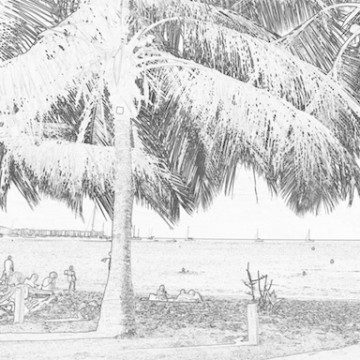Caribbean Coasts at Risk
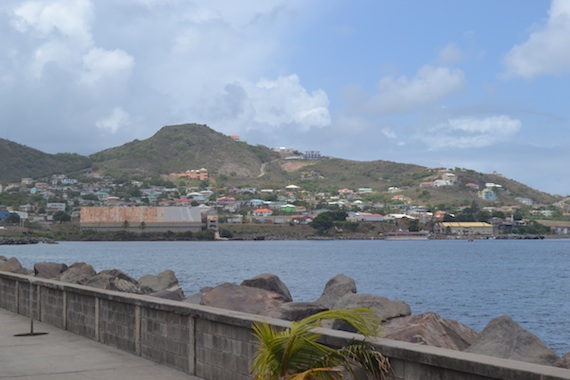
By Michael W Beck, PhD
CJ Contributor
TWO WEEKS ago, I was gunning the boat hard for the cut into Hatchet Bay, the “Safest Harbor” in the Bahamas.
When I felt the cold air blast of a coming thunderstorm, I went full throttle. Just then, a single bolt of lightning split the sky and cracked right into the harbor. As I skidded the back end thru the cut, I saw that there were just two boats moored—and one was on fire. I was lucky to be in the right place at the right time, and was able to help the lone sailor put the fire out. Unfortunately, the condition of his boat had only exacerbated his vulnerability.
This experience reinforced for me many of the lessons that we learned in developing Coasts@Risk, a global index of the risks that coastal nations face around the world.
Risk is determined by two key factors:
1) Exposure measures how likely you are to be hit by coastal hazards such as storms (e.g. are you in a storm belt?)
2) Social Vulnerability measures how prepared people are to withstand (resistance) or bounce back (resilience) from those impacts.
When we looked at coastal nations around the world, we found that many Caribbean nations are some of the highest-risk places in the world, because they have very high exposure to coastal hazards and generally high social vulnerability.
We also found that social vulnerability was highly correlated with environmental degradation.
The health and abundance of a society’s natural resources – such as reefs, mangroves and fisheries – has a great effect on its ability to resist and bounce back from natural disasters. These natural resources affect everything from quality of life (how well nourished people are) to livelihoods, jobs and protection from storms. Just like in Hatchet Bay, the state of your ship has a great affect on your risk.
Indeed, when we added factors like “fisheries status” to global risk analyses, we found that many Caribbean nations fared even worse than before. Integrating these new factors created a better picture of real risk. When fish and catches are small and harder to get, people are more vulnerable.
For example, when we look across the 25 countries with the very highest risk, we find that more than 500 Million people depend on marine fisheries for protein.
The good news is that there are things that we can do. Our research also finds that reefs and mangroves can be cost effectively restored and this has major effects on protecting coastlines from waves and storms. In fact, reefs can reduce a full 97 percent of the wave energy that would otherwise hit coastlines. And, the food, jobs, recreation, and other services that these habitats provide improve livelihoods as well.
Currently, reefs and mangroves provide risk reduction benefits to more than 15 million people across the Caribbean and some 250 million people globally. But, the numbers could still be greatly expanded. Better fisheries management is not just an environmental issue; it is also a social vulnerability issue. Governments, aid and conservation groups, and local organizations need to focus more on improving how communities manage their fisheries if we are to have a real impact on reducing risk.
We also believe that better development choices could support both risk reduction and conservation goals. This is particularly true in post-disaster recovery efforts. If governments and development funders take a more cautious approach – one that also takes into consideration the value and health of local environmental systems – when rebuilding in the highest risk, low-lying areas, communities will decrease their future vulnerability.
Of course, we can’t expect these improvements to occur without significant collaboration. There is significant opportunity for development, aid and environment groups to better work together on these opportunities in ways that could reduce risks to both nature and people.
Michael Beck is Lead Marine Scientist at The Nature Conservancy. For a full bio, click here.
